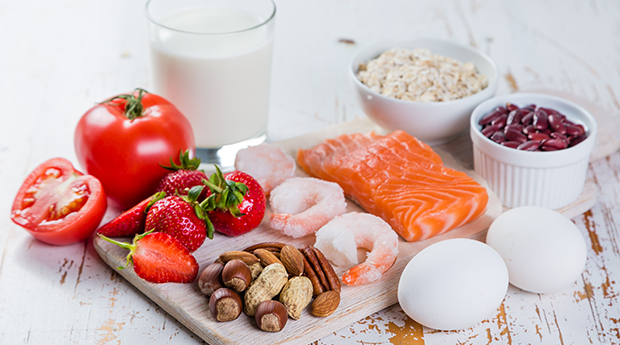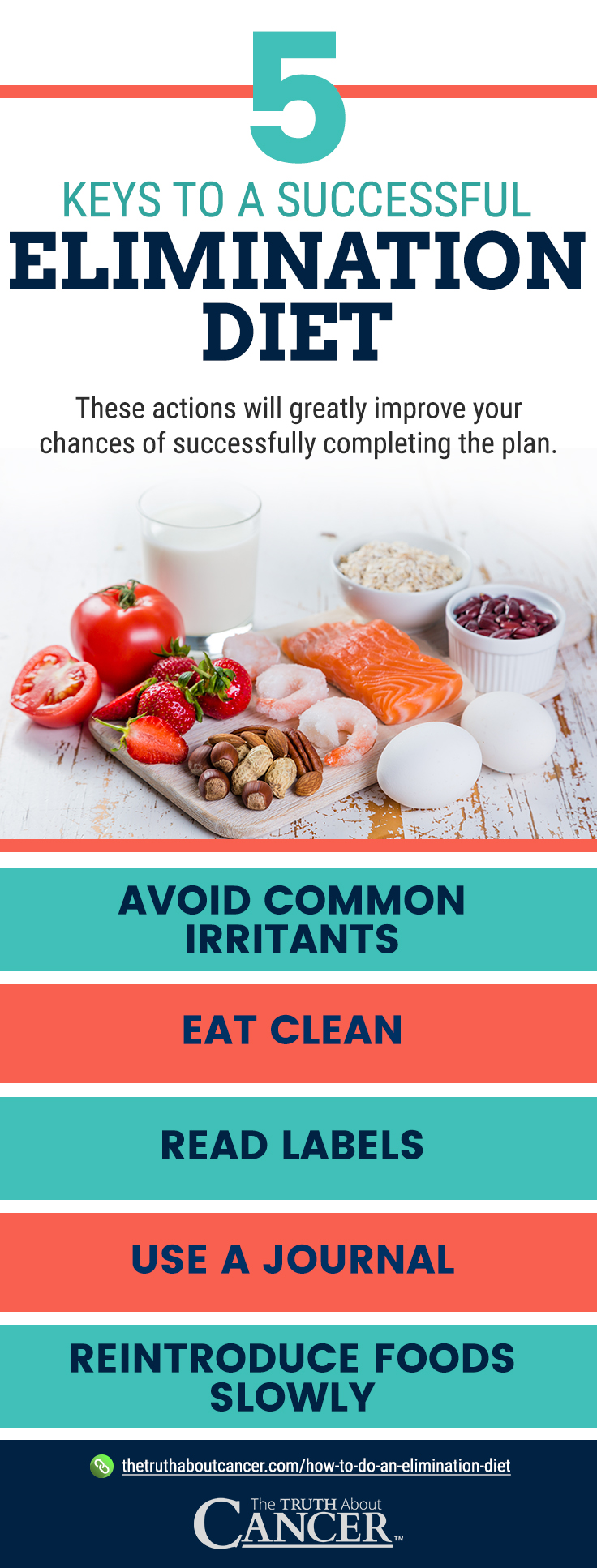Many people go through life feeling poorly. They are fatigued, suffer from digestive discomfort, don’t sleep well, and have skin issues. They have felt unwell for so long they don’t even remember what it’s like to feel good. The root of most health conditions is inflammation. One of the most common sources of inflammation is a hidden food sensitivity. Yes, the foods you’re eating every day could be slowly destroying your health.
An elimination diet is an effective way to discover and remove symptom-triggering foods. Over time, the level of inflammation reduces and the body can heal and repair itself. This article will discuss: who should do an elimination diet, how to do an elimination diet that works, and five keys to successfully following an elimination diet.
How Does an Elimination Diet Work?
At least 70% of your immune system is found in the gastrointestinal system. When you eat something that your body perceives as a threat, the immune system and brain respond by creating an inflammatory reaction. This is controlled by the enteric nervous system.
The enteric nervous system is a series of neurotransmitters that connects the gut to the brain. When we eat, the enteric nervous system sends chemical messages to the brain to release enzymes, hormones, and inflammatory responses. These same signals are communicating messages related to food sensitivities, microbial infections, and nutrient deficiencies.
An elimination diet is an eating plan that removes select foods from a person’s diet for a period of time (usually three to four weeks). The foods eliminated are foods that commonly contribute to inflammation and other reactions. After a period of elimination, foods are slowly reintroduced, one at a time. A person monitors how their body responds to each food during reintroduction.
The elimination/reintroduction process helps a person determine which foods cause symptoms or negative reactions. Once a person discovers and removes these foods, symptoms disappear and their health improves!
5 Keys to Following an Elimination Diet
Before starting the elimination diet, it is important to plan ahead and strategize. Remove the eliminated foods from your house. Go shopping for the healthy, nutritious foods that are listed below. Buy a journal or notebook. These actions will greatly improve your chances of successfully completing the plan.
The five keys to following an elimination diet are:
#1. Avoid the Most Common Irritants
Eight major foods account for 90% of all allergic reactions. These are milk, eggs, wheat/gluten, soy, nuts, peanuts, fish, and shellfish. The food elimination diet that I recommend includes these foods along with several more. Avoid eating the following common allergen/sensitive foods for at least three weeks.
12 Foods to stop eating during an elimination diet include:
- Gluten (wheat and other gluten-containing foods)
- Dairy (lactose and casein)
- Refined sugar
- Eggs (whites can be even more problematic than yolks)
- Corn
- Soy
- Vegetable Oils (canola, safflower, peanut, cottonseed, soybean, and corn)
- All Grains
- Shellfish
- Tree nuts
- Legumes (beans and lentils)
- Nightshade vegetables (tomatoes, potatoes, okra, goji berries, eggplant, cayenne, paprika, and bell peppers)
In addition to the foods listed above, people with major digestive disorders (such as Irritable Bowel Syndrome) will often need to remove high FODMAP fruits and vegetables and red meat. FODMAP is an acronym for Fermentable, Oligo-, Di-, Mono-saccharides And Polyols.
FODMAPs are short-chain carbohydrates that are poorly absorbed in the small intestine, including lactose, fructose, fructans and galactans, and polyols. By removing these foods, digestive symptoms may improve.
#2. Eat Clean, Nutrient-Dense Foods
You don’t have to worry about being hungry on an elimination diet. You can eat abundantly as long as you are consuming whole, clean, unprocessed foods. Look for organic sources whenever possible.
The following are 6 foods to include while on the elimination diet:
1. Vegetables
You should consume large amounts of raw, steamed, or sautéed vegetables. The best healing vegetables are cruciferous vegetables, such as kale, collard greens, artichokes, cauliflower, broccoli, Brussels sprouts, cabbage, watercress, and bok choy.
Other vegetables to include are cruciferous sprouts such as broccoli sprouts or kale sprouts which are great for detoxifying the liver. Celery, fennel, cucumbers, lettuces, sea vegetables, green beans, snow peas, mushrooms, squash, pumpkin, and sweet potatoes are also great to include during the elimination diet.
2. Protein
Healthy proteins can be eaten while on the elimination diet. Organic poultry, grass-fed beef, wild-caught fish, and wild game are excellent protein sources.
3. Fruits
The best fruits to consume while on the elimination diet are low-glycemic fruits. These include berries, grapefruits, lemons, limes, and Granny Smith apples.
4. Healthy Fats
The staple calorie source should come from good fats such as avocados, coconut oil, coconut flour, coconut butter, coconut flakes, coconut milk, grass-fed ghee, olives, and extra-virgin olive oil.
5. Herbs and Spices
You can enjoy a variety of healthy herbs and spices such as turmeric, ginger, oregano, cilantro, basil, thyme, and cinnamon.
6. Fermented Foods
Fermented foods such as sauerkraut, kimchi, coconut water kefir, coconut yogurt, and apple cider vinegar are key additions during the elimination diet. Fermented foods provide pre-metabolized nutrients and probiotics to heal the digestive system.
#3. Read Labels
It is very important to read food labels to be sure that you are avoiding even trace amounts of the foods you are eliminating. Some of the most common irritants, such as gluten and dairy, can be found in unexpected foods. There are also hidden ingredients in manufactured products. You must be very cautious when eating any pre-packaged foods or at restaurants.
It is best to avoid eating out during the elimination diet. If you must eat out, ask the server about the ingredients in the foods you are considering, including the type of oil used for cooking. Your best bet is to order simple meals, such as grilled meat or fish with steamed vegetables.
#4. Use a Food Journal
It is imperative to keep a journal during the entire process. You should journal before the elimination period, during the elimination period, and during the reintroduction period to assess how you look and feel.
Before you begin eliminating foods, it is important to list everything you are noticing in your body. Observe how your skin looks. What are your digestion and bowel habits? How do you sleep? Do you have pain or inflammation? What is your mood before and after eating? How does your body feel before and after eating? How is your cognitive function? Do you ever feel like you have brain fog? Include in your journal any issues or complications you may be experiencing. This will help you notice changes when they occur.
During the elimination phase, record how you feel throughout the day. Do you have more energy? Are your symptoms less severe? Do you notice better quality sleep? Has your skin changed? If you notice a reaction from a food that was not already included in the elimination diet, eliminate that food as well.
It is also important to use the food journal when you reintroduce foods. With each food you reintroduce, do you notice any reaction? Your journal can be your best friend through the elimination diet process. The more detailed you are in journaling, the better.
#5. Begin Adding Foods Back in a Slow, Isolated, and Intentional Manner
After the elimination period, it is time to start testing foods. Add foods one at a time, every three days, and monitor your symptoms. If you do NOT notice a change, you can choose to reintegrate that food into your diet. If you notice a negative reaction or symptom, you may need to eliminate that food for a longer period of time – or even indefinitely in some cases.
If any food is associated with symptoms, stop eating that food immediately. Once the symptoms clear, reintroduce the next food for three days. Continue reintroducing eliminated foods until you have assessed all eliminated foods.
If you notice any symptoms returning after you begin consuming a particular food, try eliminating that food again. If you are sure that food was the only major stress on your body during that period, keep that food out of your diet for at least another month before trying it again.
It is important to reintroduce pure, uncomplicated foods rather than complex foods. Otherwise, you may be confused as to which food is causing symptoms which may appear. This is because the complex food may contain two or more of the eliminated foods. For example, if lasagna or pizza is reintroduced, they both contain dairy and wheat/gluten. You may be reacting to either of these foods.
These are the five keys to a successful elimination diet. If you follow the steps outlined above, you will uncover food allergies and food intolerances that are contributing to your health issues. By removing the offending foods, health conditions can improve and even resolve!
Who Should Do an Elimination Diet?
Everyone would benefit from doing some form of an elimination diet at least once. I have seen several clients with chronic pain, headaches, or skin conditions who have almost completely recovered after a food elimination diet.
A food elimination diet enables you to discover what foods cause symptoms you may be experiencing. By eliminating these trigger foods, you can live symptom free.
People who may especially benefit from an elimination diet include:
- Anyone struggling with autoimmune disease or metabolic syndrome
- People with body aches and pains caused by inflammation
- People who struggle with headaches, sinus infections, allergies, snoring, or sleep apnea
- Those with skin irritations, acne, eczema, hives, blemishes, and rashes
- Anyone with low energy levels despite eating a healthy diet
- People who struggle to fall asleep or stay asleep through the night
- Women with premenstrual syndrome or menopausal struggles
- Anyone with known food allergies that is still experiencing symptoms (since oftentimes one type of allergy, such as gluten, can be linked to other kinds of sensitivities, such as dairy)
Want to stay informed of cutting edge ways to stay healthy? Get notified each week when brand new articles are added by clicking here.
Article Summary
One of the most common sources of inflammation is a hidden food sensitivity.
An elimination diet is an effective way to discover and remove symptom-triggering foods.
Before starting the elimination diet, it is important to plan ahead and strategize. Here are 5 keys that will help you be successful:
- Avoid the most common irritants
- Eat clean, nutrient-dense foods
- Read labels
- Use a food journal
- Add foods back in a slow, isolated, and intentional manner
Avoid eating the following common allergen/sensitive foods for at least three weeks.
- Gluten (wheat and other gluten-containing foods)
- Dairy (lactose and casein)
- Refined sugar
- Eggs (whites can be even more problematic than yolks)
- Corn
- Soy
- Vegetable Oils (canola, safflower, peanut, cottonseed, soybean, and corn)
- All Grains
- Shellfish
- Tree nuts
- Legumes (beans and lentils)
- Nightshade vegetables (tomatoes, potatoes, okra, goji berries, eggplant, cayenne, paprika, and bell peppers)
You can eat abundantly on an elimination diet as long as you are consuming whole, clean, unprocessed foods (ideally organic). 6 foods to eat while on the elimination diet are:
- Vegetables
- Protein
- Fruit
- Healthy fats
- Herbs & Spices
- Fermented foods
Almost everyone would benefit from doing some form of an elimination diet at least once. For anyone with any type of health condition, eliminating trigger foods can be especially beneficial.




















It is a good idea to have an iG blood test to establish what foods you should not be eating. I did this 19 years ago and the results to my health have been amazing. But people seem to love their ailments for some reason and are very hesitant to give up what they think are goods we must have.
I have seen that food intolerances seem to be passed down from one parent and young people are getting worse intolerances than I did.
Its a very interesting subject.
I sometimes do not even bread all the time because I feel when I eat too much bread, I put on a bit of weight. Sometimes I eat bread, sometimes I do not.